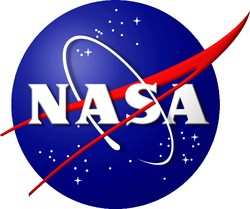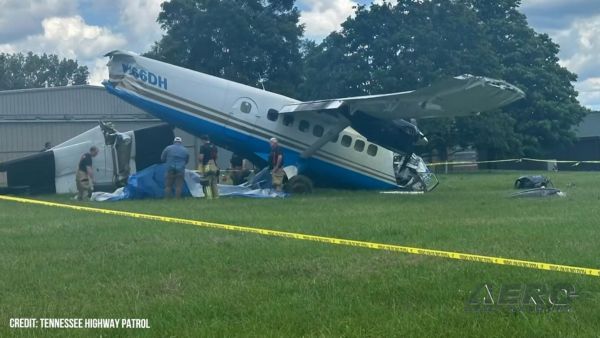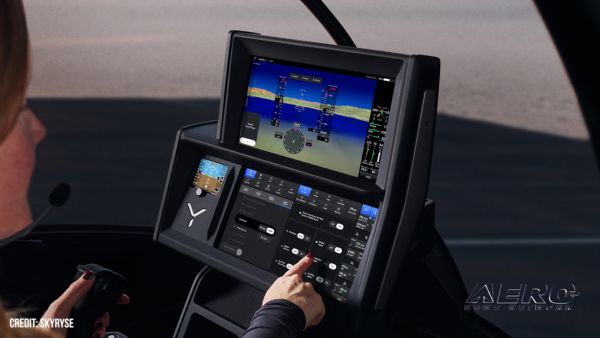Thu, May 20, 2010
17 Demonstrations Projects Eyed By NASA, Commercial Spaceflight
Companies
 NASA has selected 17 technology demonstration projects for
reduced-gravity aircraft flights to demonstrate whether emerging
technologies can perform as expected in the reduced-gravity
environment of the moon and Mars, or the zero-gravity environment
of Earth orbit. NASA selected the projects through its Facilitated
Access to the Space Environment for Technology program, or FAST.
The selected projects are from U.S. companies, universities and
NASA laboratories from 10 different states. NASA will begin flying
the projects during the last week of September.
NASA has selected 17 technology demonstration projects for
reduced-gravity aircraft flights to demonstrate whether emerging
technologies can perform as expected in the reduced-gravity
environment of the moon and Mars, or the zero-gravity environment
of Earth orbit. NASA selected the projects through its Facilitated
Access to the Space Environment for Technology program, or FAST.
The selected projects are from U.S. companies, universities and
NASA laboratories from 10 different states. NASA will begin flying
the projects during the last week of September.
The program is designed to incorporate new technologies into
NASA's flight programs and other commercial aerospace applications.
Reduced-gravity conditions can be simulated for periods of 25
seconds in an aircraft flying repeated parabolic trajectories.
The FAST program can reduce the risk of using new technologies
during space missions by providing an opportunity to prove how they
work in a reduced-gravity environment. The flights also can provide
insight into why some technologies may fail before deploying them
on a costly ride into the unforgiving environment of space. The
selected projects will address challenges such as monitoring human
health, managing liquid propellants in zero gravity, maneuvering
vehicles, assembling structures and manufacturing in space. Other
experiments will test components for new types of space propulsion,
life support systems and tools for advanced biology research.
Several projects deal with methods to process resources on the
moon.
NASA will provide no cost, reduced-gravity flight time for the
project test teams. The teams will be responsible for all other
expenses. This is the third year of FAST flights, which will again
use a commercial aircraft under NASA's Microgravity Services
Contract. The aircraft will fly approximately 40 reduced-gravity
parabolas for four days this fall, operating from Ellington Field
in Houston.
The Reduced Gravity Office at NASA's Johnson Space Center in
Houston will oversee the test operations. NASA's Glenn Research
Center in Cleveland will provide support to the project teams.
More News
Also: AV-8B Harrier For CAF Arizona, Boeing Gets ODA, Army NG Rescue, Longitude To C. America A California Superior Court judge recently ruled that GAMI’s unleaded avgas does>[...]
Light Gun A handheld directional light signaling device which emits a brilliant narrow beam of white, green, or red light as selected by the tower controller. The color and type of>[...]
Aero Linx: T-6A Texan II The T-6A Texan II is a single-engine, two-seat primary trainer designed to train Joint Primary Pilot Training, or JPPT, students in basic flying skills com>[...]
At The Time Of The Accident The Wind Was 140° At 11 Knots, Gusting To 19 Knots Analysis: According to the pilot, she was on a multi-day cross-country flight in the experimental>[...]
Have A Story That NEEDS To Be Featured On Aero-News? Here’s How To Submit A Story To Our Team Some of the greatest new stories ANN has ever covered have been submitted by our>[...]
 Airborne 06.04.25: G100UL Legal Decision, FAA v Starship, Laser Conviction
Airborne 06.04.25: G100UL Legal Decision, FAA v Starship, Laser Conviction ANN's Daily Aero-Term (06.09.25): Light Gun
ANN's Daily Aero-Term (06.09.25): Light Gun ANN's Daily Aero-Linx (06.09.25)
ANN's Daily Aero-Linx (06.09.25) NTSB Final Report: Evektor Aerotechnik EV97
NTSB Final Report: Evektor Aerotechnik EV97 ANN FAQ: Submit a News Story!
ANN FAQ: Submit a News Story!



